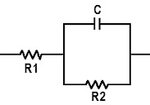Rajnaveen
Member level 2
Hi friends;
I want to ask that when invereter is running at full load , battery is discharing with some amp suppose 50A . my question is that will this discharging current and ripple current will have value ?
& is this ripple current will decreases with incresing value of electrolitic dc capacitor?
- - - Updated - - -
pwm freq is 20KHz . output 230V ,50Hz
I want to ask that when invereter is running at full load , battery is discharing with some amp suppose 50A . my question is that will this discharging current and ripple current will have value ?
& is this ripple current will decreases with incresing value of electrolitic dc capacitor?
- - - Updated - - -
pwm freq is 20KHz . output 230V ,50Hz
